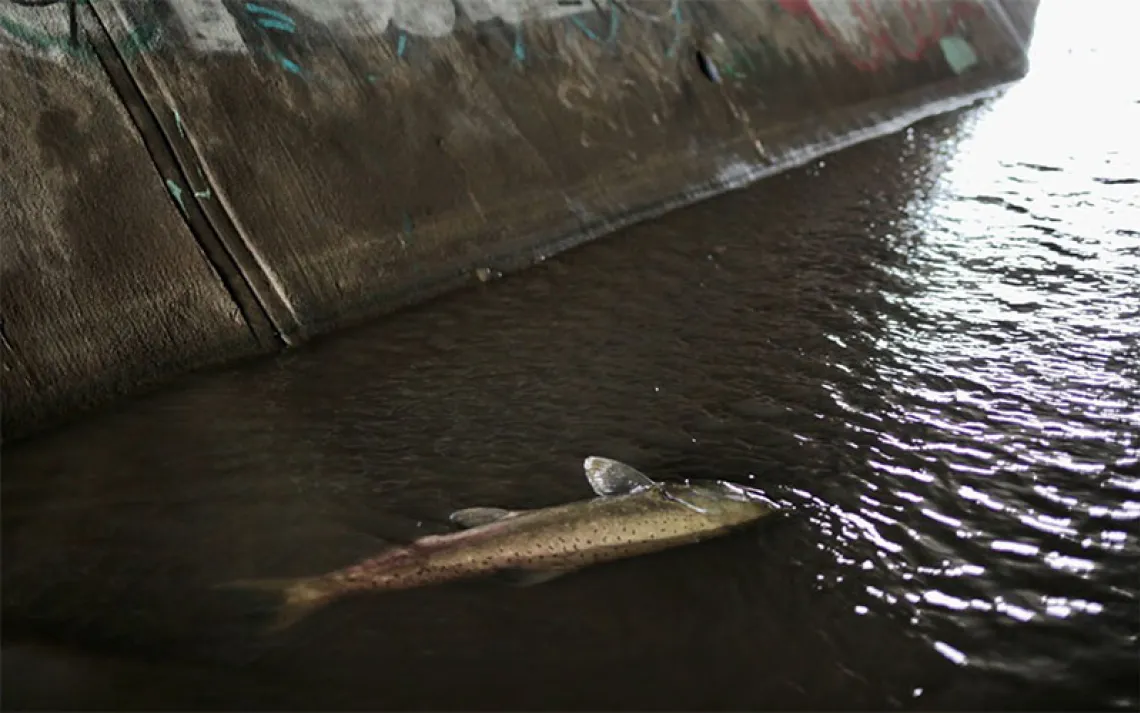Sharks Take a Bite
Video and photos courtesy of the Khaled bin Sultan Living Oceans Foundation
The grey reef shark is a fairly standard looking shark—torpedo body, tall dorsal fin, teeth protruding just outside its mouth. No strange adaptations like those found in hammerheads, threshers, or wobbegongs. Despite how common the sharks may appear, researchers are still making exciting new discoveries about them.
Back in the summer of 2013, a team of cinematographers and researchers from Khaled bin Sultan Living Oceans Foundation recorded for the first time grey reef sharks feeding without the use of bait or other attractants. While in French Polynesia documenting coral reefs, the team learned of a site where marbled grouper aggregate every summer to spawn—and a large population of grey reef sharks that feed on them. They knew they had to seize the opportunity to document such a unique event.
Sure, we’ve all seen videos of sharks tearing at a frozen chumsicle on Shark Week, but this sort of frenzy is completely artificial. To capture natural feeding behavior requires seeking out healthy reefs with large shark populations, and having the patience and skill to wait for a feeding event to occur.
Even then, you have to have your camera and lights in the right direction. “The cameramen have to be both creative and technical,” says Philip Renaud, executive director of the foundation. “I think it takes a special breed of people to be an underwater cameraman....You have to be disciplined.”

The team filmed the sharks while they hunted the spawning grouper and also at night, when they hunted other reef fish. Then, with the guidance of shark researcher Dr. William Robbins, the team examined the footage for insights into their behavior.
They found that the sharks adapted their feeding strategy to different prey species and situations. During the grouper spawn, groups of sharks rushed in and ganged up on individual grouper in what Renaud describes as “shark tornadoes.” At night they pursued reef fish individually in a slow and controlled manner.
The sharks targeted whatever prey species was most abundant, a behavior that may play a role in controlling reef fish populations. On the other hand, in both feeding scenarios less than 10 percent of their attempts to catch a fish were successful. The low rate of successful predation may be why large populations of sharks can exist on a reef without significantly depleting the reef fish biomass.


Make every day an Earth Day
Get articles like this one sent directly to your inbox.
With this action you affirm you want to receive Sierra Club communications and may vote on policy designated by the Sierra Club Board.
This past October, the team published their findings in the scientific journal Coral Reefs. Their footage was compiled into a documentary Sharks of the Coral Canyon, available to stream on their website, which won a 2015 Emmy® Award for Best Environment-Program. Renaud hopes viewers will take away an appreciation of how magnificent natural events like the grouper spawning are, and that it will inspire the desire to protect them.
“All it would take would be for one commercial fishing boat to come in here, in the month of July when this spawning aggregation happens, and they would decimate it....That's happened place after place after place around the world,” says Renaud. Despite such vulnerabilities, he says, “it still gives us some hope that there are sharks and groupers in larger numbers in that area.”

 The Magazine of The Sierra Club
The Magazine of The Sierra Club



